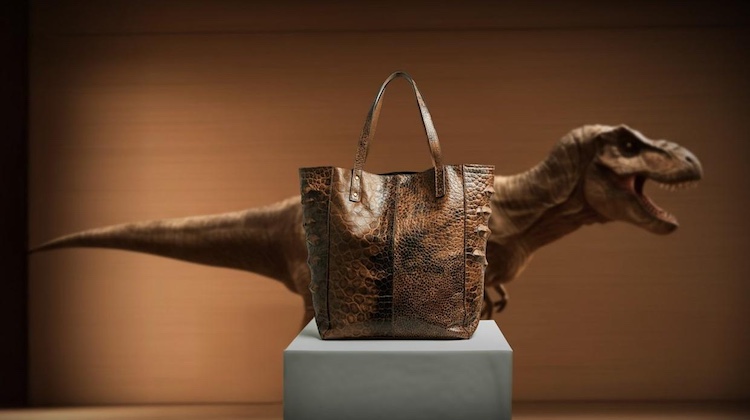
If you think you’ve seen it all in the world of materials innovation, get ready for something straight out of Jurassic Park— but with a sustainable twist.
A team of big names — creative agency VML, biotech specialists The Organoid Company, and sustainable materials pioneers Lab-Grown Leather Ltd. — just announced a partnership to create the world’s first T-Rex leather. And no, this isn’t a marketing gimmick. They’re actually using Tyrannosaurus rex DNA as a blueprint to engineer real leather — without harming any animals or faking it with plants or plastics.
Here’s how it works: Researchers are taking fossilized T-Rex collagen as their starting point. Using synthetic DNA (custom-built by The Organoid Company), they create cells that are grown into leather using Lab-Grown Leather’s “scaffold-free” tissue engineering tech. That’s a fancy way of saying the cells grow their own natural structure — just like real skin — rather than relying on synthetic supports or fillers. The result? A material that’s structurally identical to traditional leather, right down to the way it feels, wears, and repairs.
And the reason they chose T-Rex? Dinosaurs evolved to survive some of the harshest conditions our planet has ever seen — which could mean some serious durability perks when it comes to the final product. As climate challenges push industries to think differently, these companies believe ancient biology might hold some answers for the materials of the future.
Now, before you get visions of dino-hide car interiors, slow your roll — at least for now. The first commercial products are expected to hit the luxury fashion market by the end of 2025. Think high-end bags, wallets, maybe shoes. But automotive applications aren’t far behind. Once production ramps up, Lab-Grown Leather Ltd. says the goal is to expand into industries like auto upholstery — offering a cruelty-free, biodegradable, and eco-friendly alternative to traditional hides.
And that’s a big deal. Traditional leather production is tied to deforestation and heavy chemical use, both of which are increasingly under scrutiny. T-Rex leather could offer the same luxurious look and performance, but with a significantly lower environmental footprint — and without the ethical baggage.
Professor Che Connon from Lab-Grown Leather put it like this: “By collaborating with VML and The Organoid Company, we’re unlocking the potential to engineer leather from prehistoric species, starting with the formidable T-Rex. This venture showcases the power of cell-based technology to create materials that are both innovative and ethically sound.”
Thomas Mitchell, CEO of The Organoid Company, added: “By reconstructing and optimizing ancient protein sequences, we can design T-Rex leather, a biomaterial inspired by prehistoric biology.”
Of course, there’s still a way to go before T-Rex leather is rolling off the production line for automotive use. But if you’re in the business of custom interiors or high-end restorations, it’s worth keeping an eye on. In a few years, offering “T-Rex leather seats” might be the ultimate conversation starter — and a serious selling point for eco-conscious luxury buyers.
It’s not every day something 66 million years old pushes the industry forward. But if this technology lives up to its promise, T-Rex leather could change the way we think about materials for good.
Recent Comments